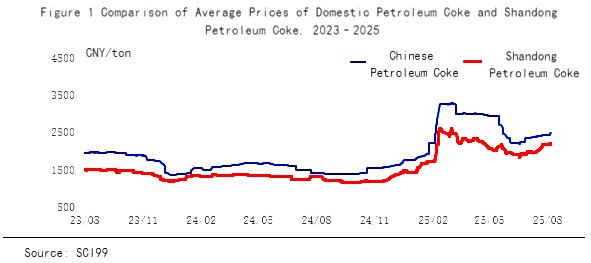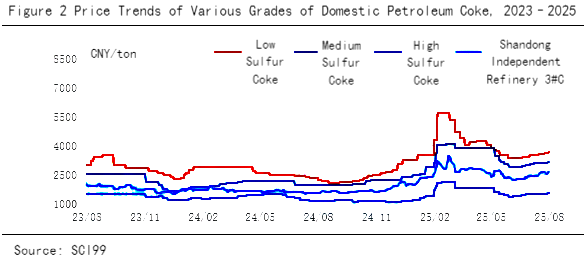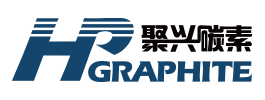【Petroleum Coke】"Anti-Involution" Policy's Impact on the Petroleum Coke Industry:...

Calcined petroleum coke, with its high carbon content, low sulfur, and low impurities, plays a vital role in modern manufacturing, especially in the aluminum and steel industries.
【Petroleum Coke】"Anti-Involution" Policy's Impact on the Petroleum Coke Industry: Short-Term Boost and Long-Term Restructuring
After the Ministry of Industry and Information Technology proposed the "stable growth" plan for ten key industries on July 18, aluminum prices were significantly boosted by market sentiment, once approaching 21,000 CNY/ton. The goal of the "anti-involution" policy is to curb "disorderly low-price competition" by optimizing industrial structure, improving product quality, and promoting green transformation, thereby achieving high-quality economic development. Following the policy signal, petroleum coke, as one of the raw materials for electrolytic aluminum, saw market expectations of tight future supply, resulting in a phase of price increases. Looking ahead, since the short-term supply-demand structure has not fundamentally changed, the impact of "anti-involution" on the petroleum coke market is expected to be more evident in the medium to long term.
Influenced by the "anti-involution" news, market sentiment was boosted and petroleum coke prices rose overall. As of August 11, the domestic average price of petroleum coke was 2,836 CNY/ton, up 142 CNY/ton from July 17, a 5.27% increase. However, as market sentiment gradually fades, the effect of the news on prices is diminishing, and the market is now paying more attention to the specific implementation of the measures.
I. "Anti-Involution" Reaches the Petroleum Coke Sector
Currently, China's petroleum coke industry is deeply trapped in typical involution. This involution manifests in three main aspects:
1) Capacity Structure: The industry shows obvious structural imbalance, with many companies crowded into producing homogeneous mid- to low-end products, leading to persistently low capacity utilization rates.
2) Competition Model: Companies generally compete by lowering quality and price rather than improving product value through technological innovation.
3) Resource Allocation: R&D investment is severely insufficient, making it difficult to effectively gather innovation elements, and the industry development falls into a cycle of low-level repetition.
This development model is clearly unsustainable. On one hand, competition continuously depresses overall industry profit margins, and some companies are already on the verge of losses. On the other hand, excessive expansion of low-end capacity causes serious resource misallocation, hindering the industry's transformation toward high-quality development. More concerning is that this involution trend forms a negative feedback loop—the more intense the competition, the more companies tend to reduce innovation investment, further aggravating homogeneous competition.

II. Short-Term Impact: Market Sentiment Disturbance, Continued Fundamental Differentiation
The short-term impact of the "anti-involution" policy on the petroleum coke market is relatively limited, mainly reflected in market sentiment disturbance rather than substantial changes in supply and demand. Currently, low-sulfur coke maintains high levels of 3,670–4,351 CNY/ton supported by new energy demand, while high-sulfur coke hovers in the 1,220–1,640 CNY/ton range due to pressure from imported resources.
From the supply side, petroleum coke, as a refining by-product, mainly depends on refinery operating rates. Domestic refineries are currently running at medium loads, and the policy is unlikely to substantially adjust the supply structure in the short term. It may only marginally tighten high-sulfur coke supply by suppressing inefficient capacity expansion or encouraging maintenance at some small and medium-sized refineries. On the demand side, the "low-sulfur strong, high-sulfur weak" differentiation continues—low-sulfur coke is supported by the new energy sector, and the demand for anode materials maintains high growth. Policy support for green industries further consolidates its price resilience. High-sulfur coke, however, remains constrained by import resources and weak traditional demand. The electrolytic aluminum industry faces "dual-carbon" constraints, coupled with competition from alternative fuels, limiting overall demand pull.
In the short term, the market is still dominated by fundamentals, and the policy effect will only become evident as capacity optimization and refinery technological improvements gradually take effect. The average price of petroleum coke is expected to fluctuate between 2,550–2,950 CNY/ton before Q4.

III. Medium- to Long-Term Transformation of the Petroleum Coke Industry
In the medium to long term, the "anti-involution" policy will reshape the petroleum coke industry through three main paths: capacity clearance, demand upgrading, and green transformation. On the supply side, backward high-sulfur coke capacity will be accelerated for elimination, promoting higher industry concentration. On the demand side, low-sulfur coke will strengthen its premium advantage in the new energy sector, while high-sulfur coke will be pushed to achieve breakthroughs in deep processing technology. Eventually, a differentiated competitive ecosystem of "low-sulfur strong, high-sulfur premium" will form, driving the systematic upward shift of the price center, though policy effectiveness still depends on the continued transmission of electrolytic aluminum profits and growth in anode material demand.
In summary, the "anti-involution" policy will drive the petroleum coke industry from quantitative change to qualitative transformation. Short-term market sentiment fluctuations cannot change fundamentals, but in the medium to long term, with the clearance of backward capacity, new energy demand ramp-up, and deepening green transformation, the industry will undergo structural upgrading. Low-sulfur coke will remain strong in the new energy sector, while high-sulfur coke will seek a new balance through technological upgrades, and the overall price center is expected to steadily rise.
Feel free to contact us anytime for more information about the petroleum coke market. Our team is dedicated to providing you with in-depth insights and customized assistance based on your needs. Whether you have questions about product specifications, market trends, or pricing, we are here to help.
No related results found








0 Replies